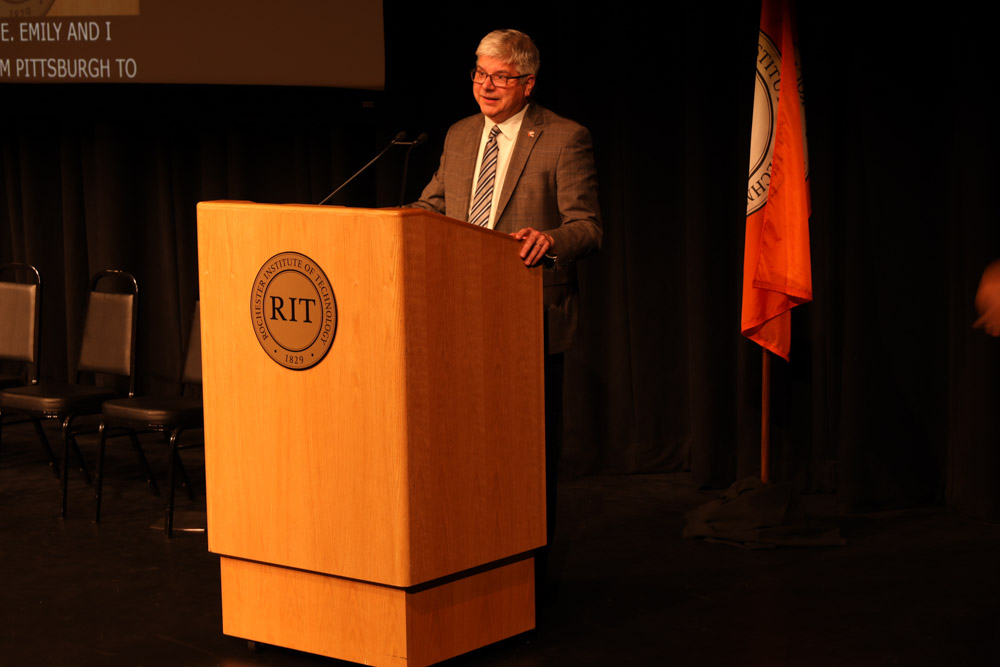
Illustration by Emily Brooks
At RIT, exams, homework and sometimes a job can add multiple layers of anxiety and stress that characterize the college experience. For the past two years, the Counseling Center has been aiding students in their fight against anxiety by introducing the Minding Anxiety Project. The project measures characteristics like breathing, respiration and heart rates, along with coherence, which is defined as the synchronization of the lungs, heart and brain together, to measure anxiety. Using these measurements, the student is able to find out what works best for them when controlling their anxiety.
“This started out as a service project from the Counseling Center,” said Laurence Sugarland, director of the project. “We got some funding from the Golisano Foundation to get this equipment and a duplicate of it. We use it for bio-feedback training, so in essence, it’s a mirror. If you get to watch your breathing, you breathe differently.”
The equipment includes sensors placed on the tips of the fingers and a magnetic sensor wrapped around the waist of the student. The sensors on the fingers monitor skin conductance, which typically symbolizes how much stress an individual is undergoing. There are separate sensors for heart rate measurement and body temperature. These aspects are also affected when an individual is stressed. “Bio-feedback is a way to control your breathing, and you can carry that with you when you go throughout your day,” said Sugarman.
“At the beginning and every four to five weeks, we have the students complete two standardized scales. One is about self concept, how they feel about themselves, and the other is anxiety.… The anxiety scale is overly-simply put ‘Well how do I look forward with dread,’” said Sugarman. “There’s a measure on how they [the student] can control his or her physiology. And it’s very helpful for people to see the session and say ‘Wow, that’s exactly how I felt!’”
After undergoing the project, students are presented with a list of goals that they would like to achieve in three categories: personal care, social interaction and academic goals. They may also create their own list of student-specific goals.
Anna Hope, another lead program director, commented on the matter: “I think my favorite thing about the program is how much freedom students are given in certain aspects of it. They can decide how they’re going to integrate this in their daily lives. They can use the equipment for however they want to be learning.”
Each student is unique and has different ways of thinking, so the project allows students to cope with stress and anxiety in a way that best suits them, rather than having a set guideline and a “one-size-fits-all” approach.
The Minding Anxiety Project is also geared towards students with Autism Spectrum Disorder. “A lot of people who came here with anxiety, or Autism Spectrum Disorder, came here are here for two reasons,” said Sugarman. “One, they’re really bright. Two, they’ve had a lot of help in high school and maybe even before, support, accommodation, including some help with work in school. The goal in this transition from home to college into life is to develop those internal resources.”
“Imagine how many institutes of technology are saying ‘What are we supposed to do with kids with anxiety and Autism Spectrum Disorder?’” said Sugarman. “At RIT, we’ve developed this program and we can train you in how to do that. This means we can make a huge difference in terms of employment, co-ops, success, self-regulatory ability. That’s pretty exciting.”
Students that are interested in participating in the Mind Anxiety Project can do so by visiting RIT’s Counseling Center, located on the second floor of the August Center.






